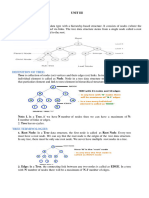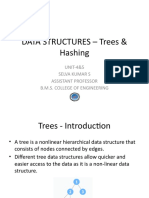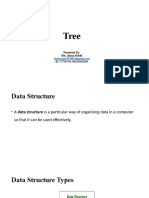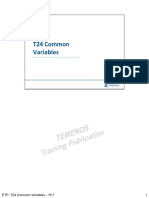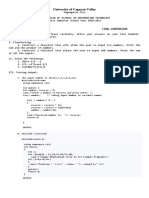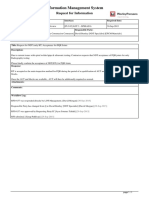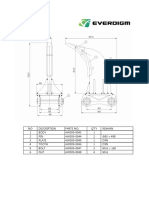0% found this document useful (0 votes)
51 views24 pagesTree Data Structure
A tree is a nonlinear hierarchical data structure where nodes are connected by edges. Each node contains a value and may have child nodes. Trees resemble actual trees with a root node and branches. Common tree operations include insert, search, and traversal. There are three traversal methods: inorder visits left subtree, then root, then right subtree; preorder visits root, then left subtree, then right subtree; postorder visits left subtree, then right subtree, then root.
Uploaded by
Kalid AhmedCopyright
© © All Rights Reserved
We take content rights seriously. If you suspect this is your content, claim it here.
Available Formats
Download as PPTX, PDF, TXT or read online on Scribd
0% found this document useful (0 votes)
51 views24 pagesTree Data Structure
A tree is a nonlinear hierarchical data structure where nodes are connected by edges. Each node contains a value and may have child nodes. Trees resemble actual trees with a root node and branches. Common tree operations include insert, search, and traversal. There are three traversal methods: inorder visits left subtree, then root, then right subtree; preorder visits root, then left subtree, then right subtree; postorder visits left subtree, then right subtree, then root.
Uploaded by
Kalid AhmedCopyright
© © All Rights Reserved
We take content rights seriously. If you suspect this is your content, claim it here.
Available Formats
Download as PPTX, PDF, TXT or read online on Scribd
/ 24

















